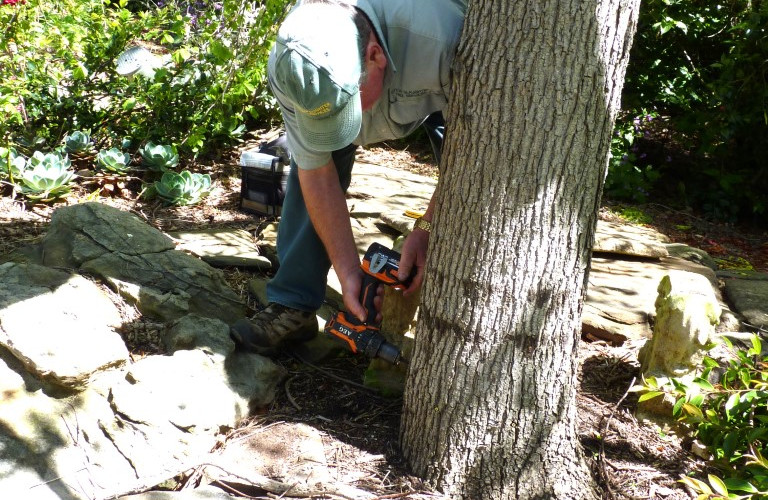Elm Leaf Beetle Treatment in Adelaide
- Steve Slaughter
- Jul 24, 2017
- 3 min read
Updated: Jan 8, 2024
What are Elm Leaf Beetles?
Elm Leaf Beetle is a pest that feeds on the leaves of Elm Trees. It was first confirmed in South Australia in January 2011, although was discovered south of Melbourne, Victoria as early as 1989.
Elm Leaf beetle identification
Elm leaf beetles are tiny, oval insects that can be identified by their long antennae and black body. The adult elm leaf beetle is usually less than 5mm long.
Larval Elm Leaf Beetle have a yellow-brown head with a darker brown abdomen and thorax. Larvae are typically found on the underside of leaves, while adults are most often found on the upper surface.

Tree Leaf Beetle, Lava and eggs. Image: treetec.net.au
Will Elm Leaf Beetle kill my tree?
Although the insect can defoliate a mature Elm in as little as a week, it rarely kills the tree outright but rather weakens it, making it more vulnerable to attack by other pests and diseases.
Elm Leaf Beetle Life Cycle
The adult beetles are dark brown/olive green and approximately 4mm long. They fly from one Elm Tree to the next and lay eggs on the underside of the Elm leaf in late November.
The eggs hatch after about 8 days with the larvae grazing on the leaf surface, leaving only a leaf skeleton behind. Such leaf damage destroys the tree’s ability to photosynthesize and produce necessary sugars and starches needed for current and next season’s growth.
During winter, the adult beetle hibernates in the garden, leaf litter, or even in buildings. In spring, the beetle flies into trees feeding on leaves, leaving small shot-like holes in the leaf, before laying eggs on the underside of the leaf. The resultant larvae feed for several weeks before crawling down the tree trunk into the garden to pupate and return as flying adult beetles.
Although adult beetles fly, they don’t often fly very far. Most beetles are spread unwittingly by dropping onto vehicles or onto people's clothing.
Controlling Elm Leaf Beetle
Steve Slaughter Tree Services have adopted stem injection as the preferred method of control. This method involves the use of injectors that deliver a predetermined dose of chemicals to the tree's vascular system by means of a small drill hole.
Stem injection will generally protect your tree for approximately 3 years (instead of 2-3 years for other techniques).
Steve treating for Elm Leaf Beetle
The amount of chemicals and the number of drill holes is determined by the circumference of the tree. Once the chemical is delivered, the small drill holes are plugged to reduce the chance of infection.
Stem injection will generally cover your tree for 2 or 3 years.
Defects in the tree structure, such as large wounds or decay, may reduce the effective transport of chemicals through the stems and branches to the leaves.
If your tree is under stress, this may also reduce the uptake of the chemical. For this reason, we recommend that you regularly water your tree from spring to autumn, particularly before we treat your tree.
Once your tree has been injected, beetles only need to ingest a small amount of leaf material before they die. This should be evident within a week or so of treatment.
Each spring, the Elm Leaf Beetle will return, but as soon as they begin to feed on your tree's leaves, they will die. For this reason, there will always be some holes in the leaves, and this amount of damage is considered acceptable. The important thing is that we prevent the skeletonizing of the leaves caused by the larvae.
Elm Leaf Beetle Control Cost
The cost of stem injection is determined by the trunk circumference at ground level. From this measurement we can calculate the volume of insecticide required to treat your tree and determine the cost.
Arborist-delivered treatments usually start from $220.
For more information, contact Steve on 0418 821 642


















Comments